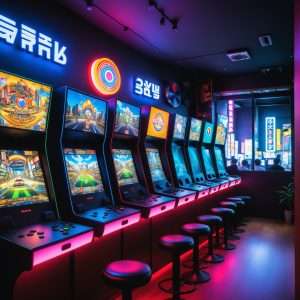Zombie Bunny is Reader-supported and may earn an affiliate commission through links on our site.
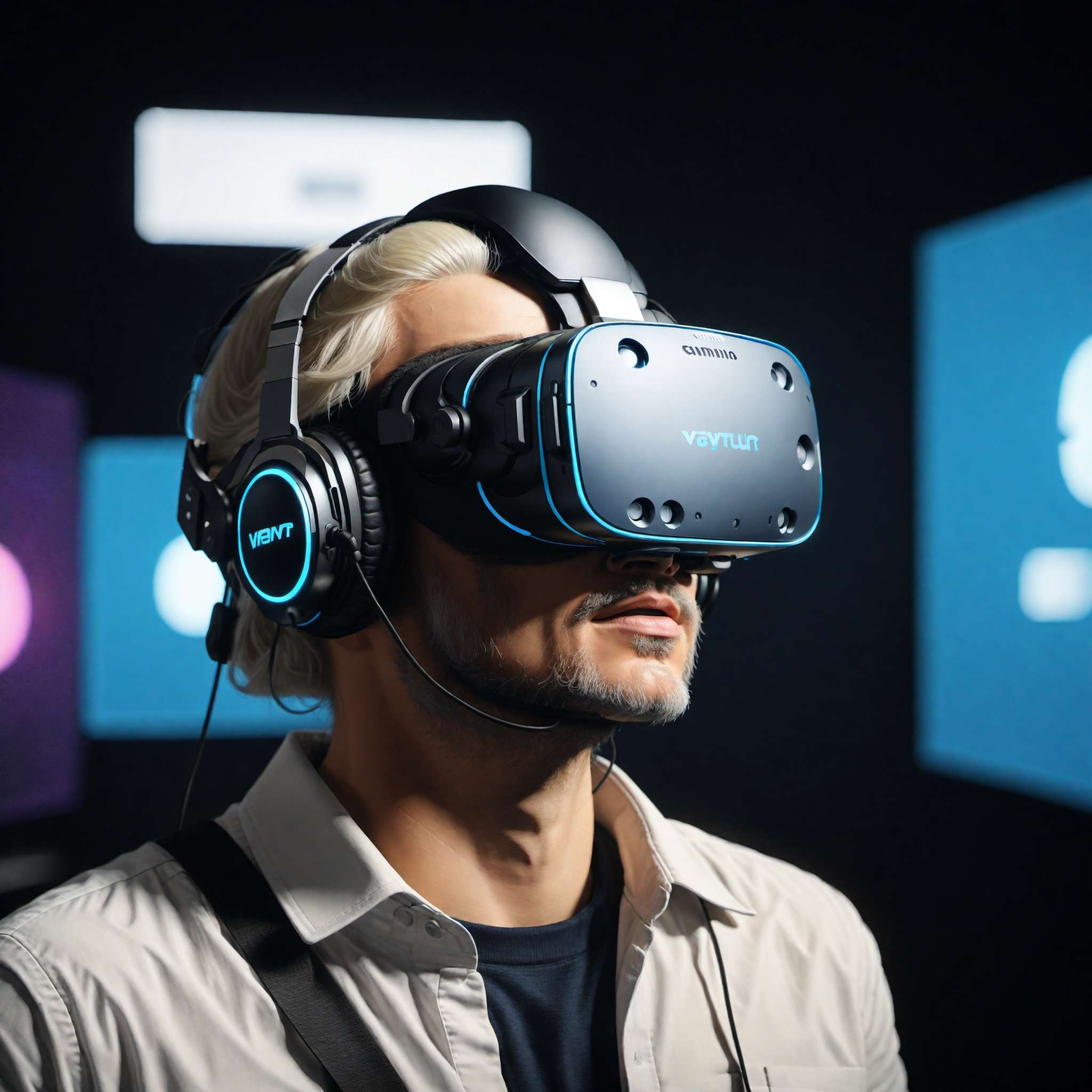
Transforming Realities: The Evolution of VR Gaming
Trace the incredible transformation of #VRGaming from inception to the present day. Uncover the evolution of a new gaming reality! #VirtualReality #GamingEvolution
Immerse yourself in the captivating journey of Virtual Reality (VR) gaming, from its humble beginnings to its transformative impact on the entertainment industry and beyond. Understand how this technology has revolutionized traditional gaming experiences, offering an unparalleled level of immersion and interaction. From educational applications to healthcare advancements, VR gaming’s potential reaches far and wide. Dive into the heart of VR gaming’s evolution and explore its promising future in our comprehensive blog post.
Introduction: The Virtual Leap
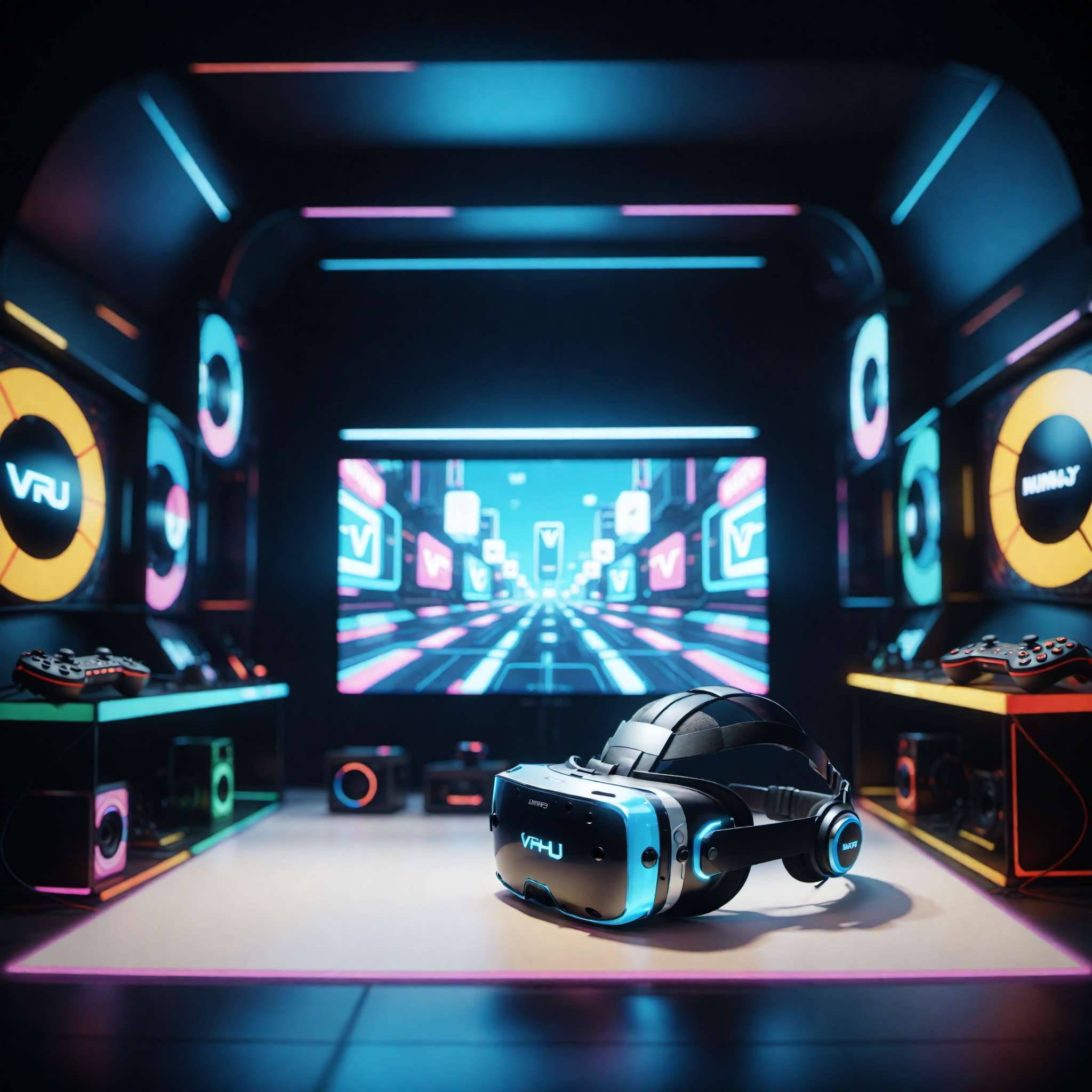
© Copyright , ZombieBunny.Org
The evolution of gaming
From the era of pixelated Pong to the hyper-realistic landscapes of today’s AAA titles, the evolution of gaming has been a breathtaking journey. This constant progression has been driven by the ceaseless quest to offer immersive experiences, pushing the boundaries of technology and imagination.
The advent of virtual reality (VR) gaming marks a significant milestone in this evolutionary journey. VR gaming transcends the conventional gaming experience, offering an immersive, interactive environment that is as close to reality as possible. It has transformed the gaming landscape, establishing a new paradigm where players can literally step into the game, interacting with digital environments in a way previously thought to be the stuff of science fiction.
This transformation has not only revolutionized the entertainment industry but also opened up a world of possibilities in various sectors such as education, healthcare, and more. In this blog post, we will take a deep dive into the evolution of VR gaming, exploring its roots, the technology that powers it, and what the future holds. We’ll also look at how this transformative technology is reshaping realities, changing the way we play, learn, and interact with digital environments. So, buckle up as we embark on a virtual journey into the heart of VR gaming.
Introduction to VR gaming
At the intersection of technology and entertainment lies VR gaming, a fast-growing sector that is redefining our perception of gaming. Unlike traditional gaming that relies on a controller and screen, VR gaming presents a deeply immersive experience where the player becomes a part of the game. With a VR headset and motion control, a player can explore and interact with a three-dimensional, computer-generated environment.
VR gaming’s immersive capabilities are not just about superior graphics or advanced controllers; it’s about creating a sensory experience that engages the player on multiple levels. It’s about the sensation of presence, the feeling of being ‘inside’ the game world, interacting with it in a dynamic, instinctive way. It’s about being able to look around, reach out, and manipulate virtual objects as if they were real.
As VR continues to mature, the line separating the virtual and the real continues to blur, offering players unparalleled gaming experiences. With the advent of more affordable and accessible VR headsets, VR gaming is no longer a niche sector but a significant industry player. As we delve further into the evolution of VR gaming, we’ll examine its origins, its present state, and what the future holds for this exciting technology. Get ready to step into the game as we explore the transformative power of virtual reality.
The transformation of realities
The world of VR gaming is not just about offering players a new way to play – it’s about transforming realities. This transformative power has seen VR evolve from a simple gaming accessory to a tool that is changing the way we interact with digital worlds. It’s blurring the lines between the physical and the virtual, creating immersive experiences that engage all our senses.
The transformation of realities in VR gaming is about more than just immersive gameplay. It’s about creating a sense of presence, a feeling of being physically present in a non-physical world. In a VR game, you’re not just controlling a character – you become the character. You can explore alien landscapes, climb virtual mountains, or walk through a recreation of historical events. You can interact with objects, solve puzzles, and even engage with other players in a shared virtual space.
This level of immersion and interactivity is transforming our perception of what a game can be. It’s no longer just about winning or losing; it’s about experiencing new worlds and living out virtual adventures. It’s about stepping into the shoes of someone else, seeing the world from a different perspective, and truly living in the game. As VR technology continues to evolve and become more accessible, we can only expect these transformations to become even more profound. Step into the future of gaming, where realities are not just played, but lived.
The Dawn of VR: Early Innovations
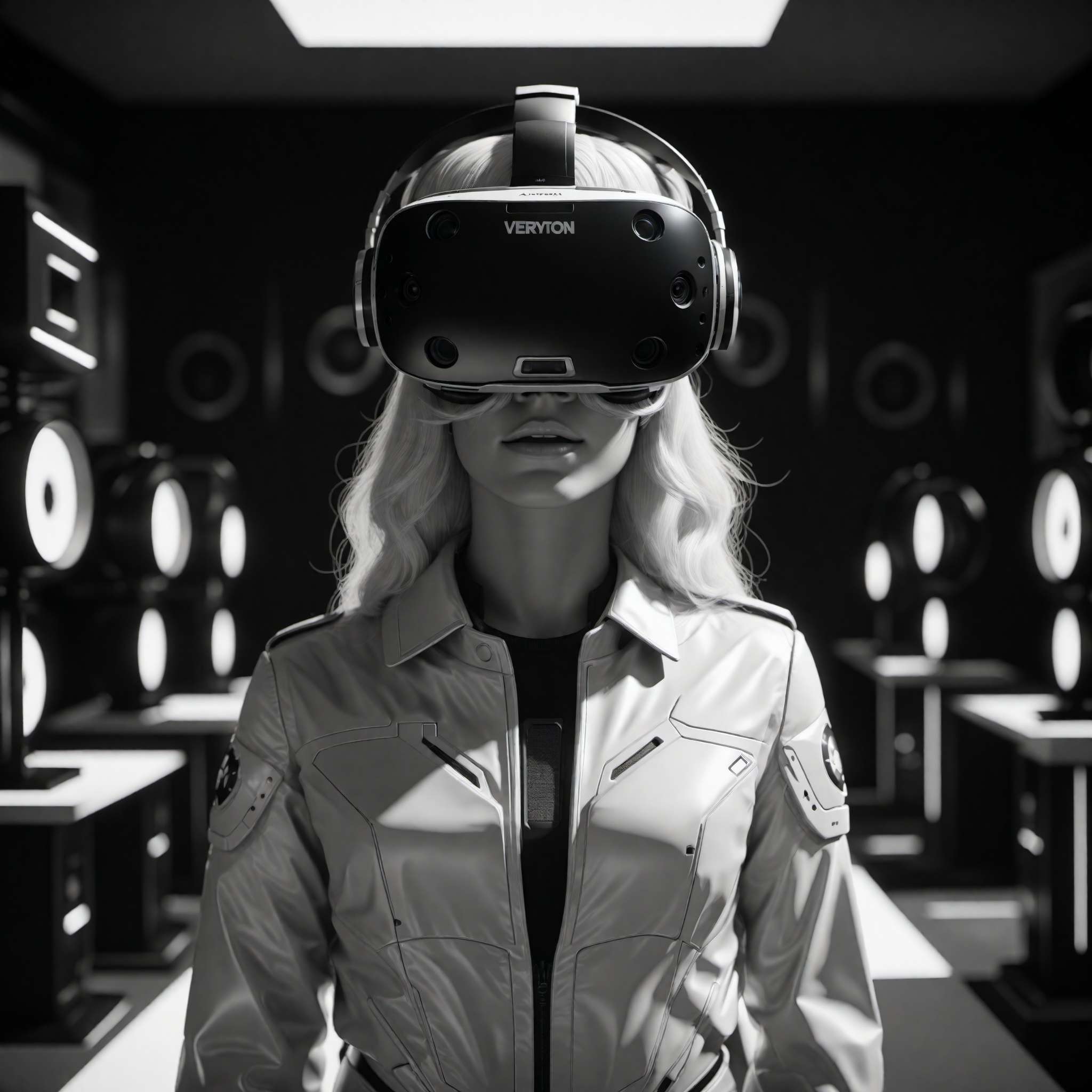
© Copyright , ZombieBunny.Org
The birth of VR technology
The birth of VR technology dates back to the mid-20th century, a period of major technological innovations. The term “virtual reality” was coined by Jaron Lanier in the 1980s, but the concept has its roots in earlier inventions. The Sensorama machine, created by cinematographer Morton Heilig in the 1950s, was one of the earliest examples of immersive, multi-sensory technology. It provided a fully immersive film experience complete with visuals, sounds, vibrations, and even smells.
The first head-mounted display, a precursor to today’s VR headsets, was developed in the 1960s by Ivan Sutherland and his student Bob Sproull. Known as the ‘Sword of Damocles’ due to its hanging design, it was a primitive device by today’s standards but groundbreaking for its time. It allowed the user to see a virtual world superimposed over the real one, a concept known as augmented reality.
These early innovations marked the beginning of the VR technology we know today. However, it wasn’t until the 1980s and 1990s, with the advent of computer technology, that VR started to take shape in the form we recognize now. Companies like Atari and Sega began exploring VR for gaming, creating prototypes and sparking interest in the potential of VR. Although these early attempts had their limitations, they laid the foundation for the VR revolution that would follow.
Early models of VR devices
The first models of VR devices were ambitious for their time, yet limited by the technology available. Nonetheless, they signaled the beginning of a new era in immersive experiences. One of the earliest attempts to commercialize VR for gaming was Sega’s VR headset for the Sega Genesis console, announced in the early 1990s. This headset was designed to deliver immersive 3D graphics and stereo sound. Unfortunately, due to technical difficulties and concerns about motion sickness, it never made it to market.
Around the same time, another key player entered the VR scene. Virtuality Group launched a range of arcade machines and VR pods. These machines used headsets and handheld joysticks to provide multiplayer VR games, making them the first mass-produced, networked, multiplayer VR gaming system.
Another significant early model was the Nintendo Virtual Boy, launched in 1995. Although it was marketed as the first portable video game console capable of displaying true 3D graphics, its monochrome display and lack of true head-tracking capabilities led to its commercial failure.
These early models, despite their shortcomings, paved the way for the advanced VR devices we see today. They represented the pioneering spirit of the time, pushing the boundaries of technology and gaming in their pursuit of immersive virtual experiences. The lessons learned from these early devices informed the development of modern VR, shaping the landscape of VR gaming as we know it.
Innovations and setbacks
The early years of VR were marked by both remarkable innovations and formidable setbacks. On one hand, these years saw the development of groundbreaking technologies that would lay the foundation for modern VR. On the other hand, they were also characterized by significant challenges that hampered the mainstream adoption of VR.
Among the major innovations of this era was the development of the first VR systems that could track a user’s movements in real-time, a critical feature for creating truly immersive experiences. This technology, known as ‘six degrees of freedom’ (6DoF), allowed users to move freely within a virtual environment, marking a significant advancement in VR technology.
On the flip side, the early VR devices faced significant setbacks. Many suffered from high latency, causing a noticeable lag between a user’s actions and the corresponding response in the virtual environment. This not only broke the sense of immersion but also often led to motion sickness among users. Furthermore, the high cost of early VR systems put them out of reach for the average consumer, limiting their adoption to a small niche of enthusiasts and early adopters.
These early innovations and setbacks played a crucial role in the evolution of VR. They served as both a driving force and a reality check, pushing the boundaries of what was possible while highlighting the challenges that needed to be overcome. Despite the hurdles, the potential of VR remained clear, setting the stage for the next wave of advancements in VR technology.
Making the Virtual Real: Tech Advancements
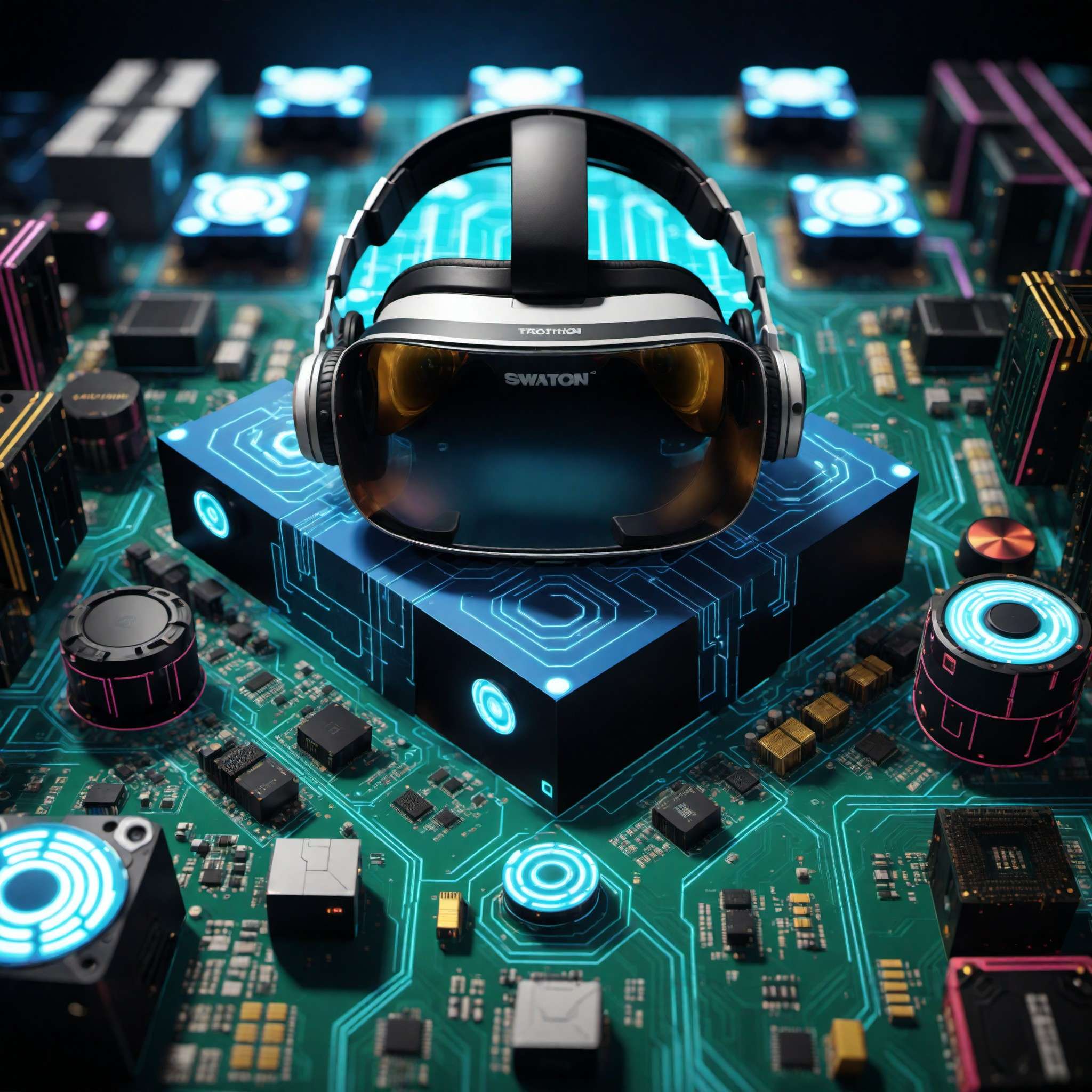
© Copyright , ZombieBunny.Org
Improvements in VR technology
The technological leaps in VR over the recent years have been nothing short of astonishing. One significant advancement is in the area of display resolution. The pixel density of VR displays has increased exponentially, leading to more realistic and crisp visuals. This improvement has greatly reduced the screen-door effect, a visual artifact of early VR headsets where visible lines between pixels created an impression of looking through a screen door.
Another key advancement has been in motion tracking. The adoption of 6DoF tracking systems has become widespread, allowing for more complex and realistic user interactions within the virtual environment. Modern VR systems can now accurately track the movements of the user’s head, hands, and even individual fingers in some cases, providing a much more immersive and intuitive user experience.
Haptic technology, which provides tactile feedback, is another area of significant advancement. Modern VR controllers can mimic the sense of touch, providing feedback that corresponds to the user’s actions within the virtual environment. This feedback can range from the sensation of holding a virtual object to feeling the recoil of a virtual gun.
These technological improvements have had a profound impact on VR gaming, making it more immersive, realistic, and engaging. As technology continues to advance, we can expect VR to become even more compelling, further blurring the line between the virtual and the real.
Impact of motion sensors in VR
Motion sensors have played a pivotal role in the evolution of VR gaming, significantly enhancing the level of immersion. These sensors track the physical movements of the player and translate them into the virtual environment, creating a direct and intuitive interface between the player and the game.
Early VR systems relied on simple motion tracking, registering basic movements like tilting or turning the head. However, modern VR systems employ sophisticated sensors that can capture complex movements with high precision. These can include everything from the subtle tilt of the head to the sweeping motion of an arm, even down to the fine movements of individual fingers.
The impact of these advancements can’t be overstated. With precise motion tracking, players can interact with the virtual environment in a natural and intuitive way. This has opened up new possibilities for gameplay, enabling actions like reaching out to grab virtual objects, wielding a sword, or casting a spell with a gesture of the hand.
Furthermore, motion sensors have also enabled room-scale VR, where players can physically move around a small space, with their movements mirrored in the virtual environment. This has added a whole new dimension to VR gaming, providing a truly immersive experience that is far removed from the traditional sit-down gaming setup. As motion sensing technology continues to advance, we can expect even greater levels of immersion and interactivity in VR gaming.
Role of 3D graphics
3D graphics have undeniably been a game-changer for the VR industry. They have the power to bring virtual worlds to life, creating visually stunning and immersive environments that draw players in. The role of 3D graphics in VR gaming goes beyond merely rendering objects and characters; it involves creating a believable, interactive, and dynamic world for players to explore.
With the aid of powerful GPUs and game engines, modern VR games can display high-resolution 3D graphics that provide the illusion of depth and space. This 3D visualization is essential for creating a sense of presence, the feeling of being ‘inside’ the game world. It enables players to perceive the virtual world as a three-dimensional space, where objects have size, distance, and orientation.
Moreover, interactive 3D graphics allow players to interact with the virtual environment in a meaningful way. They can manipulate objects, navigate complex landscapes, and engage in combat with lifelike enemies. Dynamic lighting, realistic textures, and real-time physics add to the immersion, making the virtual environment feel more tangible and engaging.
The role of 3D graphics in VR gaming is only set to grow as technology continues to advance. With the emergence of technologies like ray tracing, which simulates realistic lighting, and AI-driven graphics enhancements, future VR games will offer even more visually stunning and immersive experiences. As we continue to push the boundaries of 3D graphics technology, the line between the virtual and the real will continue to blur.
Stepping into the Game: Immersive Experiences
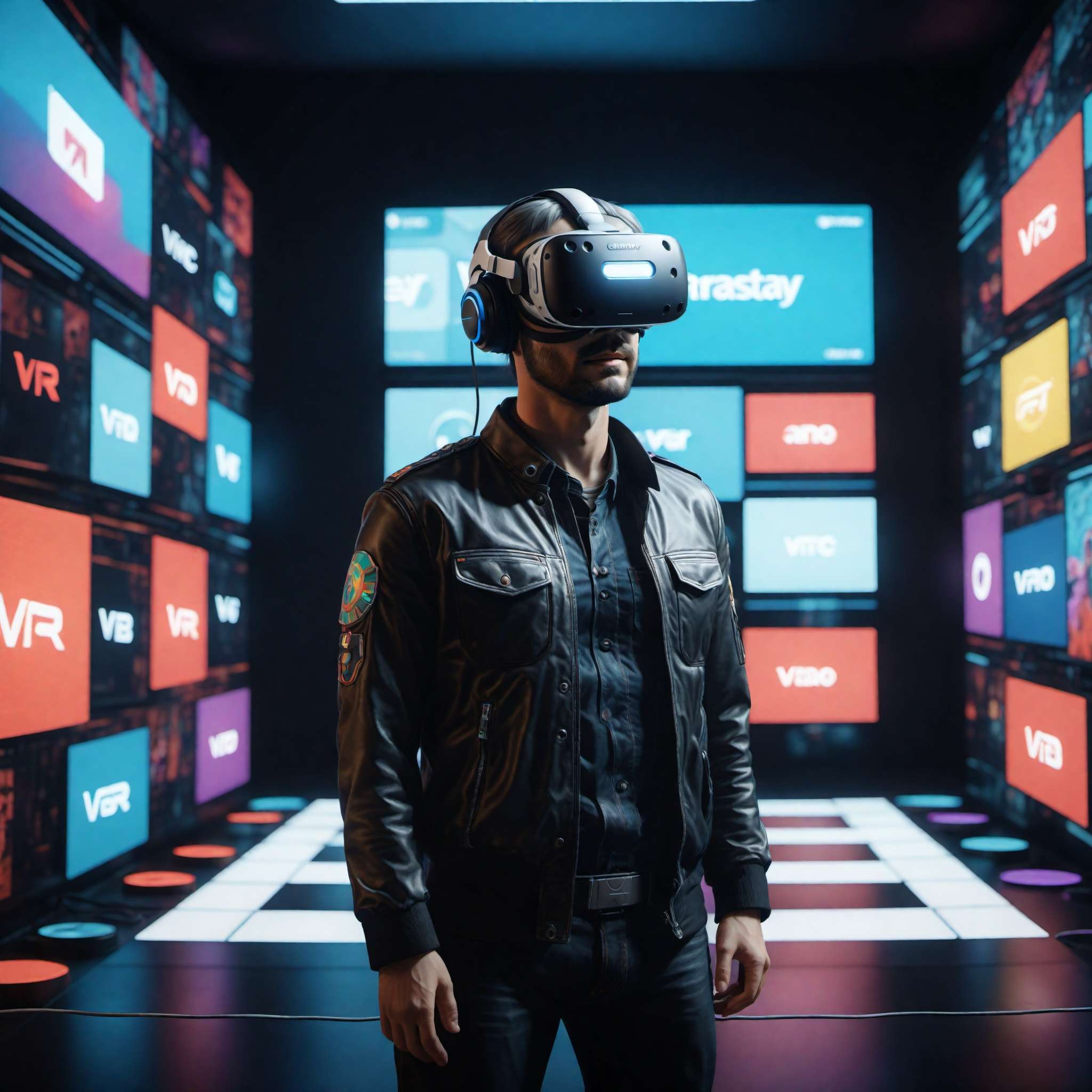
© Copyright , ZombieBunny.Org
Creating immersive VR environments
The creation of immersive VR environments is at the heart of VR gaming. These environments are not just 3D renderings of spaces; they are fully interactive digital worlds designed to engage players on multiple levels. The goal is not just to visually impress, but to create a sense of presence, the feeling of being physically ‘inside’ the game world.
Creating an immersive VR environment involves a combination of high-quality 3D graphics, realistic sound design, and intuitive interactions. The visual aspect is crucial, with detailed textures, realistic lighting, and dynamic environments contributing to the sense of immersion. Sound design plays a key role too, with spatial audio techniques used to create a sense of depth and directionality, making the virtual world feel more tangible.
Equally important are the mechanics of interaction within the VR environment. This involves designing natural and instinctive ways for players to interact with the game world, from picking up objects and manipulating them, to navigating the environment, to engaging in combat or other activities.
The ultimate goal of creating immersive VR environments is to make the player forget they are in a game at all. This level of immersion opens up new possibilities for gameplay, storytelling, and player engagement. It allows players to become part of the game, experiencing the virtual world as if it were real. This is the magic of VR gaming, and the driving force behind its continuing evolution.
Introduction of VR in gaming
The introduction of VR in gaming has marked a significant shift in the industry, transforming the way games are played and experienced. Before the advent of VR, gaming was primarily a two-dimensional experience, confined to the boundaries of a screen. However, VR has shattered these boundaries, offering players the chance to step into the game world, becoming active participants rather than passive observers.
In the early days, VR gaming was largely experimental, with developers exploring the potentials and limitations of the technology. The initial offerings were simple, often focusing more on the novelty of VR than on delivering engaging gameplay. However, as the technology evolved, so did the games. Developers began to understand the unique strengths of VR and how to leverage them to create immersive and interactive experiences.
Today, VR gaming encompasses a wide range of genres, from adventure and action to puzzle and simulation. It offers unique gameplay mechanics, such as physical interaction with the game world, spatial navigation, and even social interaction with other players in the same virtual space.
The introduction of VR in gaming has not just expanded the possibilities of gameplay, it has also opened up new avenues for storytelling, offering a level of immersion that traditional gaming simply cannot match. As we continue to explore the potential of VR, the future of gaming looks more exciting than ever.
User experience in VR gaming
The user experience in VR gaming is a significant departure from traditional gaming. In a VR game, players don’t just control a character on a screen; they step into the shoes of the character, experiencing the virtual world first-hand. This level of immersion creates a unique user experience that sets VR gaming apart.
In VR gaming, players interact with the game world in a more natural and intuitive way. Instead of pressing buttons on a controller, they can reach out with their hands to manipulate virtual objects, use physical movements to navigate the environment, and even use body language to communicate with other players. This physicality adds a new layer of immersion and engagement to the gaming experience.
Another defining aspect of the user experience in VR gaming is the sense of presence. VR games can make players feel like they are truly ‘inside’ the game world. This sense of presence can be incredibly compelling, making players feel more connected to the game and more invested in the outcome.
However, designing a good user experience in VR gaming also presents unique challenges. Developers need to consider factors like motion sickness, accessibility, and comfort. Balancing immersion and comfort is a key challenge in VR game design, but when done right, it can lead to truly unforgettable gaming experiences. As VR technology continues to improve, we can expect the user experience in VR gaming to become even more immersive and engaging.
The New Playground: VR Gaming Platforms

© Copyright , ZombieBunny.Org
Introduction of VR gaming platforms
The evolution of VR gaming has been marked by the introduction of several dedicated VR gaming platforms. These platforms have been instrumental in bringing VR gaming to the mainstream and continue to drive its growth. Each platform offers a unique blend of hardware and software, delivering distinct experiences to cater to different types of gamers.
One of the most recognizable names in the VR landscape is Oculus, now owned by Facebook. The Oculus Rift, initially launched in 2016, was one of the first high-end VR headsets available to consumers. It was later followed by the Oculus Quest, a standalone VR headset that offers 6DoF tracking without the need for external sensors.
Another key player in the VR gaming space is Valve with their SteamVR platform and the high-end Valve Index headset. The Index is renowned for its superior visual fidelity and precision controllers, making it a favorite among VR enthusiasts.
Sony’s PlayStation VR, designed to work with the PlayStation 4 and PlayStation 5 consoles, has also made a significant impact, bringing VR gaming to a large existing user base of console gamers.
Lastly, HTC’s Vive platform, which includes the Vive and Vive Pro headsets, has been a major contributor to the growth of VR gaming, known for its room-scale VR capabilities and high-quality controllers.
These platforms have played a crucial role in shaping the VR gaming landscape, each contributing its unique strengths and innovations. As technology continues to advance, we can expect to see new platforms emerge, pushing the boundaries of VR gaming even further.
Popular VR games and experiences
The VR gaming landscape is teeming with a wide array of games and experiences, catering to diverse tastes and interests. From action-packed adventures to serene explorations, VR games offer a range of experiences that go beyond traditional gaming.
One of the most popular VR games to date is “Beat Saber”. This rhythm game combines music with lightsaber action, having players slice through beats that come flying at them in time with music. Its intuitive gameplay and catchy soundtracks have made it a hit among VR gamers.
“Superhot VR”, another fan favourite, is a unique first-person shooter where time moves only when the player moves. This mechanic adds a strategic element to the game, making players think carefully about their movements and actions.
For those who prefer a more relaxed gaming experience, “Moss” offers a charming adventure puzzle game set in a lush, animated world. Players guide a mouse named Quill through a series of puzzles and battles, interacting with the environment to help her along the way.
“Half-Life: Alyx”, developed by Valve, has also made waves in the VR gaming community. This highly anticipated game offers a deeply immersive experience set in the Half-Life universe, combining puzzle-solving, exploration, and combat.
These games represent just a fraction of what’s available in VR gaming. As more developers explore the potential of VR, we can expect to see an even wider range of innovative and immersive games and experiences in the future.
Digital distribution of VR games
Digital distribution has been integral to the growth and accessibility of VR gaming. The emergence of dedicated VR gaming platforms brought with them digital stores, where players can browse, purchase, and download VR games directly to their devices. This model of distribution has made VR games more accessible to a wider audience and allowed developers to reach more players than ever before.
One of the leading platforms for digital distribution of VR games is SteamVR. Part of the larger Steam platform, it offers a vast library of VR titles from various developers, ranging from big-name studios to independent creators. Its user-friendly interface, regular sales, and community features have made it a popular choice among VR gamers.
Oculus also offers its digital store, where users can purchase and download games specifically designed for Oculus devices. Sony’s PlayStation VR games, meanwhile, are available through the PlayStation Store.
Digital distribution has also enabled the growth of indie VR developers. Without the need for physical production and distribution, indie developers can more easily publish their games and reach a global audience. This has led to a surge in innovative and unique VR titles that push the boundaries of what’s possible in VR gaming.
The convenience and accessibility of digital distribution, combined with the ever-growing library of VR titles, have made VR gaming more appealing and accessible to a wider audience. As VR continues to grow, digital distribution will undoubtedly play a key role in its future.
Beyond Entertainment: VR’s Wider Applications
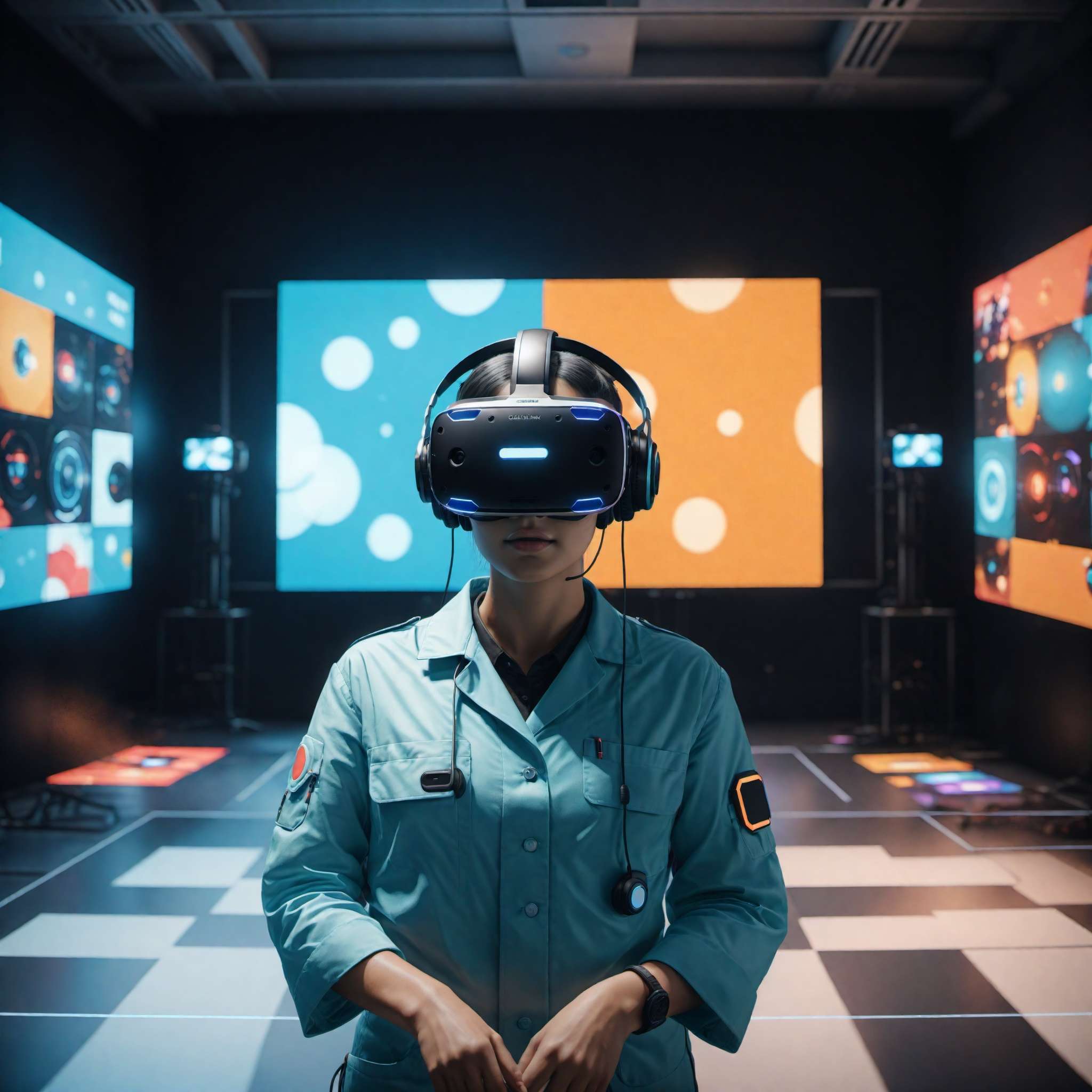
© Copyright , ZombieBunny.Org
VR in industry
While VR gaming continues to capture the imagination of players worldwide, the technology’s applications are not limited to entertainment alone. Various industries have recognized the potential of VR and are leveraging it for a wide range of purposes. The immersive nature of VR makes it a powerful tool for visualization, training, and simulation, among others.
In the field of architecture and real estate, for instance, VR is used to create virtual walkthroughs of buildings and properties. This allows clients to explore spaces in 3D before they are built or without physically being there, offering a new level of convenience and visualization.
The healthcare industry also benefits from VR technology. It’s being used for medical training, allowing students and practitioners to practice procedures in a risk-free, virtual environment. It’s also used in therapy, where VR experiences can help patients with rehabilitation or to manage conditions such as anxiety and post-traumatic stress disorder.
In the automotive industry, VR is used for design and testing, allowing engineers to examine a car’s design in 3D and simulate different conditions. Similarly, in the aerospace industry, VR is used for flight simulations and astronaut training.
These are just a few examples of how VR is being used outside the gaming industry. As the technology continues to evolve and become more accessible, its applications are likely to expand even further, bringing the power of VR to even more fields and industries.
VR in education
VR’s role in education is expanding, offering innovative ways to enhance learning and teaching. By providing immersive, interactive experiences, VR has the potential to transform education, making it more engaging and effective. It offers a hands-on, experiential form of learning that can complement traditional teaching methods.
One significant application of VR in education is in science education. VR can provide virtual labs where students can conduct experiments without the need for physical equipment or materials. This not only makes science education more accessible but also allows students to experiment freely without fear of making mistakes.
In history education, VR can offer immersive experiences that bring historical events and periods to life. Students can virtually travel to different eras or locations, getting a firsthand look at historical settings and events. This can greatly enhance their understanding and engagement with the subject matter.
VR can also be used to develop skills and simulate real-world experiences. For example, medical students can practice surgeries in a virtual environment, while aspiring mechanics can learn how to repair a car engine.
Furthermore, VR in education isn’t limited to the classroom. It also has potential in distance learning, providing immersive, interactive learning experiences to students learning from home.
As VR technology continues to improve and become more accessible, its role in education is set to grow. It offers an exciting tool for educators to engage students, enhance understanding, and make learning a more immersive and enjoyable experience.
VR in healthcare
The healthcare sector has emerged as a significant beneficiary of VR technology. From training and education to patient treatment and rehabilitation, VR is transforming various aspects of healthcare, offering new possibilities and improvements.
For medical training, VR provides a safe and controlled environment where healthcare professionals can practice procedures and hone their skills. For instance, surgeons can use VR to simulate surgeries, allowing them to practice complex procedures without any risk to patients.
In terms of patient care, VR has shown promise in several areas. It’s being used in pain management, where immersive VR experiences can help distract patients undergoing painful procedures or suffering from chronic pain. Similarly, in mental health, VR is being used to treat conditions like phobias and post-traumatic stress disorder, allowing patients to safely confront and manage their fears in a controlled environment.
VR also plays a role in physical rehabilitation. For patients recovering from strokes or injuries, VR can provide engaging and adaptable exercises that can help improve motor skills and monitor progress.
In addition, VR can facilitate patient education, helping patients understand their conditions or treatments better. By visualizing medical procedures or the impact of diseases in VR, patients can gain a better understanding of what’s happening to their bodies.
As VR technology continues to evolve and its benefits in healthcare become increasingly apparent, it’s set to play an even bigger role in shaping and improving the future of healthcare.
The Reality of VR: Overcoming Challenges
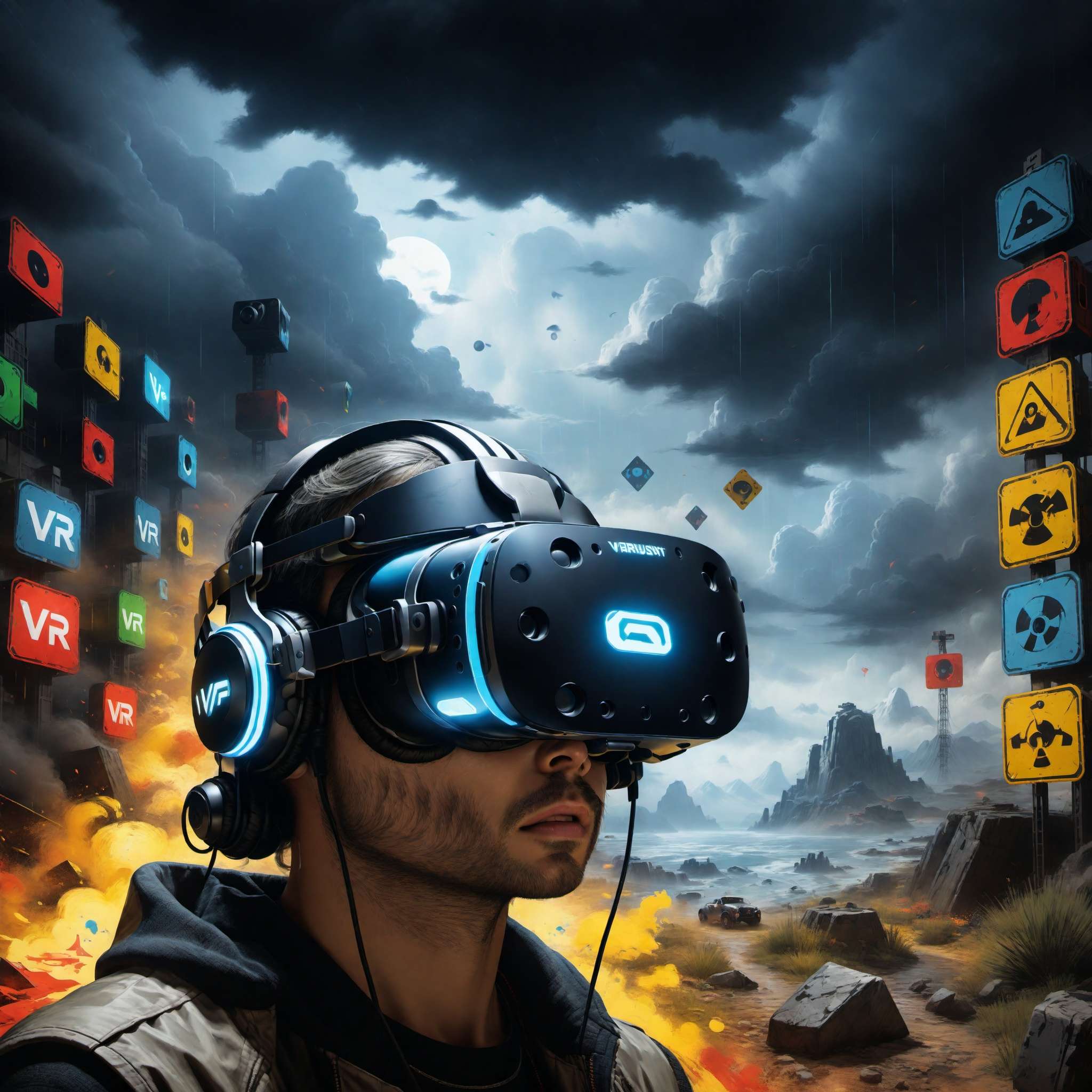
© Copyright , ZombieBunny.Org
Health concerns in VR
While VR offers numerous benefits and opportunities, it also presents a set of unique health concerns. The immersive nature of VR, which is one of its greatest strengths, can also lead to physical and psychological effects. Understanding and addressing these concerns is key to ensuring the safe and healthy use of VR.
One common health concern associated with VR is motion sickness, often referred to as “cybersickness”. Some users may experience symptoms such as dizziness, nausea, or disorientation while using a VR headset, particularly during fast-paced or movement-heavy games. This is often due to a disconnect between what the user’s eyes see in the virtual environment and what their body feels in the physical world.
Another concern is eye strain, resulting from prolonged use of VR headsets. The close proximity of the display to the user’s eyes, combined with the intense focus required by some VR experiences, can lead to discomfort or fatigue.
VR’s immersive nature can also impact users psychologically. Intense VR experiences can elicit strong emotional responses and may even affect users’ perception of reality.
Addressing these health concerns involves both technological solutions, such as improving motion tracking and display technology, and user awareness. Users should be aware of the potential risks and take regular breaks to rest and recalibrate their senses. As VR continues to evolve, ensuring it is safe and healthy to use will be crucial for its sustained growth and acceptance.
High costs and accessibility issues
The high cost of VR hardware and the accessibility issues associated with it are significant challenges in the widespread adoption of VR gaming. High-end VR headsets can be expensive, and they often require powerful, costly computers to run the VR software. This financial barrier can prevent many potential users from experiencing VR gaming.
Furthermore, the physical space required for a full VR gaming setup can also be a challenge. Room-scale VR experiences, which allow users to move around in a physical space that is tracked and mirrored in the virtual environment, require a considerable amount of unobstructed space. This can be a limiting factor for those living in smaller homes or apartments.
Accessibility issues extend beyond just cost and space. The physical demands of VR gaming, such as standing or moving for extended periods, can be a barrier for those with disabilities or health conditions. Additionally, some people may experience discomfort or adverse health effects from using VR headsets, as discussed earlier.
To overcome these challenges, companies are investing in more affordable and accessible VR solutions. Standalone VR headsets, which don’t require a connected computer, are becoming more common and affordable. Developers are also exploring ways to make VR games more accessible, including options for seated play and controls that accommodate a wide range of physical abilities. As the VR industry continues to grow and evolve, making VR gaming more accessible and affordable will be a key focus.
Technical limitations and challenges
While VR technology has come a long way, it still faces technical limitations and challenges that impact the user experience. These challenges range from hardware limitations to software development hurdles, and overcoming them is crucial for the continued growth and evolution of VR gaming.
One of the most common hardware limitations in VR is the resolution of the displays. While VR headsets have seen significant improvements in display resolution, they still lag behind traditional screens in terms of pixel density. This can lead to visual artifacts like the screen-door effect, where visible gaps between pixels can detract from the immersive experience.
Another challenge lies in the tracking systems used by VR devices. While modern VR headsets offer precise tracking, issues such as latency or drift can sometimes occur, causing a disconnect between the user’s movements and the corresponding action in the virtual environment. This can break the sense of immersion and even cause motion sickness in some users.
On the software side, developing VR games presents its own challenges. Creating immersive, interactive environments requires considerable computational power, and optimizing VR games to run smoothly while maintaining high-quality graphics and interactions can be a complex task.
Despite these challenges, the progress made in VR technology in recent years is impressive. As VR hardware and software continue to improve, these technical limitations and challenges will become less of a barrier to the immersive and engaging experiences that VR gaming can offer.
Future Horizons: The Potential of VR
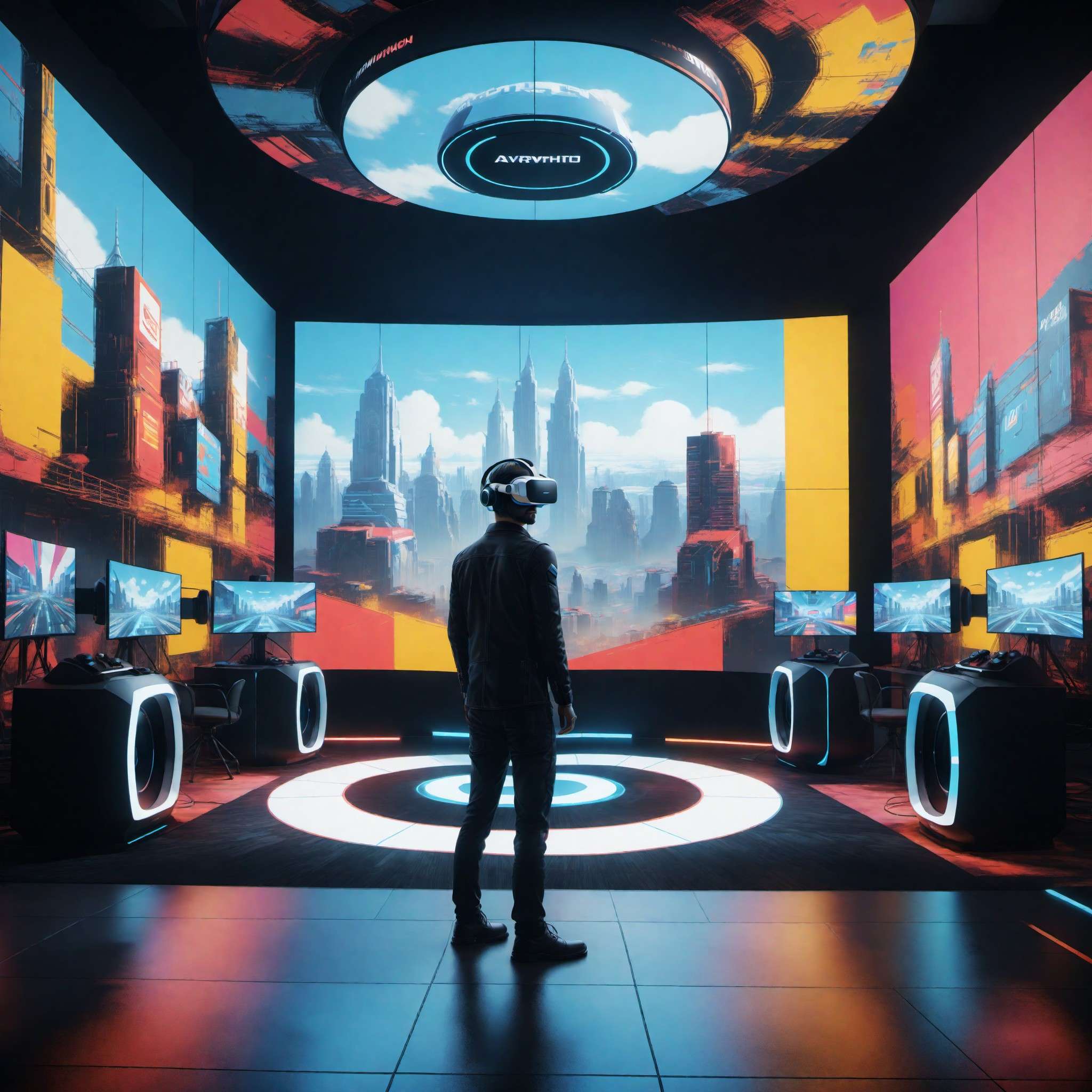
© Copyright , ZombieBunny.Org
Forecast of VR technology
The future of VR technology holds immense potential. As hardware improves and becomes more affordable, and as software continues to push the boundaries of what’s possible in a virtual environment, we can expect VR to become an increasingly prevalent part of our digital lives.
One key area of advancement is in the resolution and field of view of VR displays. Future VR headsets will likely feature higher resolution displays that offer a more lifelike visual experience. Similarly, advances in optics could lead to wider fields of view that more closely match the human eye, further enhancing the sense of immersion.
Another area of progress is in the tracking and interaction systems used in VR. Future VR systems may offer even more accurate and natural ways to interact with the virtual world, such as gesture recognition or even brain-computer interfaces.
On the software side, advancements in game engines and graphics technology will enable even more realistic and interactive virtual environments. We can also expect to see more social and multiplayer VR experiences, as network technology and social VR platforms continue to evolve.
In terms of applications, while gaming will continue to be a major driver for VR, we can also expect to see VR become more prevalent in fields like education, healthcare, and design as the technology matures.
The future of VR is bright, and the evolution of VR gaming to date is just the beginning. As we continue to explore the potential of this technology, the opportunities are virtually limitless.
Integration of AI in VR
The integration of artificial intelligence (AI) in VR is an exciting frontier that holds immense potential. AI can enhance VR experiences in various ways, from creating dynamic, responsive environments to enabling more natural interactions with virtual characters.
One key application of AI in VR is in the creation of procedural content. AI algorithms can generate environments, objects, or even entire game levels on the fly, creating unique and unpredictable experiences each time a game is played. This can greatly enhance the replayability and longevity of VR games.
AI can also be used to create intelligent virtual characters. These characters can respond to the player’s actions and decisions in a realistic and believable way, creating more immersive and engaging narratives. AI can enable these characters to learn and adapt over time, providing a level of interaction that goes beyond pre-programmed responses.
Furthermore, AI can be used to enhance the physical interaction in VR games. AI-driven physics systems can simulate realistic object behavior, while AI-based gesture recognition can enable more natural and intuitive controls.
The integration of AI in VR is still in its early stages, and we are only beginning to scratch the surface of what’s possible. As AI technology continues to advance and become more integrated with VR, we can expect to see even more immersive and dynamic VR experiences in the future.
Future applications of VR
As VR technology continues to evolve, its potential applications are expanding beyond gaming into a wide range of sectors. The ability of VR to create immersive, interactive environments lends itself to numerous uses, from learning and training to design and collaboration.
In the field of education, we can expect to see more widespread use of VR as a teaching tool. VR can offer immersive, hands-on learning experiences that can complement traditional methods, making education more engaging and effective.
The healthcare sector is another area where VR has significant potential. From surgical training to patient rehabilitation, VR can provide safe, controlled environments that can improve both training and treatment outcomes.
In business, VR can transform the way we work and collaborate. Virtual meeting spaces can bring remote teams together in a more engaging way, while VR design tools can streamline product development and prototyping.
The entertainment industry, beyond gaming, is also set to be transformed by VR. From virtual concerts and theater to immersive storytelling experiences, VR can offer new ways to create and consume content.
Finally, social VR platforms, where users can interact with each other in virtual spaces, are set to become more prevalent. These platforms can facilitate social interaction and community-building in a digital age.
These are just a few of the future applications of VR. As the technology continues to evolve, we can expect to see VR integrated into even more aspects of our lives, transforming our digital experiences.
Joining the Revolution: Getting Started with VR Gaming
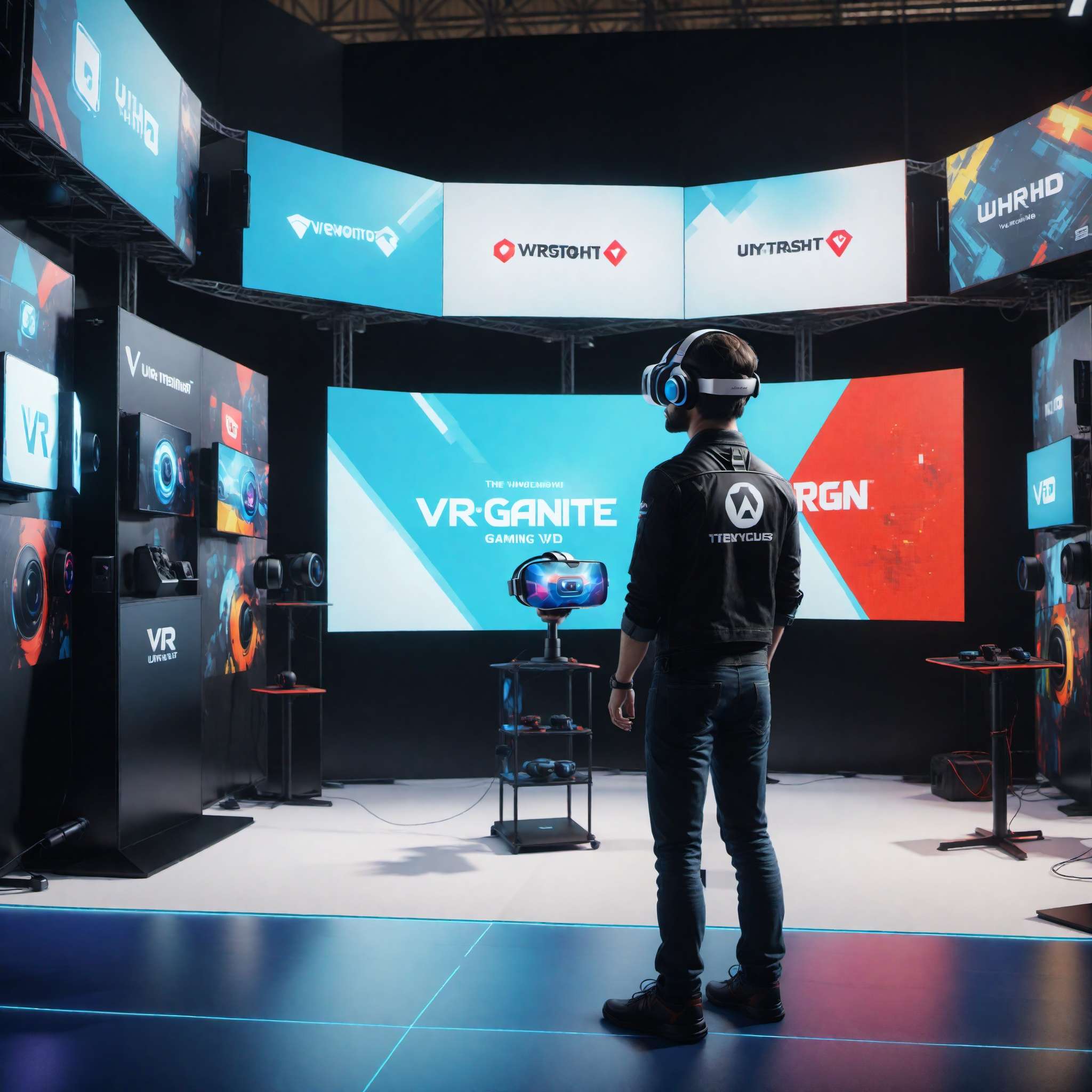
© Copyright , ZombieBunny.Org
How to get started with VR gaming
Getting started with VR gaming might seem daunting, but it’s easier than you might think. The first step is choosing the right VR headset. There are several options available, ranging from high-end headsets like the Oculus Rift S, Valve Index, and HTC Vive, to more affordable options like the Oculus Quest 2, which offers a standalone VR experience without the need for a powerful PC.
Once you’ve chosen your headset, you’ll need to set up your play area. Many VR games require a certain amount of unobstructed space for you to move around safely. Make sure your play area is clear of any obstacles that could pose a tripping hazard.
Next, you’ll need to install the necessary software. This will typically involve setting up an account on a digital distribution platform like Steam or the Oculus Store, where you can browse, purchase, and download VR games.
When choosing your first VR games, start simple. Many VR platforms offer introductory experiences designed to help new users acclimate to VR. Once you’re comfortable, you can start exploring a wide range of games in different genres.
Remember to take regular breaks while gaming in VR to avoid discomfort or motion sickness. Start with short sessions and gradually increase your playtime as you get used to the VR environment.
As you explore the world of VR gaming, remember the most important rule: have fun! VR gaming is all about immersive, interactive experiences, so dive in and enjoy the ride.
Choosing the right VR equipment
Choosing the right VR equipment is a crucial step in starting your VR gaming journey. The first piece of equipment you’ll need is a VR headset. When choosing a headset, there are several factors to consider. These include the resolution of the display, the field of view, the refresh rate, and the tracking system.
High-end headsets like the Oculus Rift S, Valve Index, and HTC Vive offer high-resolution displays, wide fields of view, fast refresh rates, and precise tracking systems. However, they require a powerful PC to run, which can be a significant additional expense.
If you’re looking for a more affordable and convenient option, standalone VR headsets like the Oculus Quest 2 could be a good choice. They don’t require a connected PC, making them more portable and easier to set up. However, their performance and graphics may not be as high-quality as the high-end headsets.
In addition to the headset, you’ll also need controllers for interacting with the VR environment. Most headsets come with their own controllers designed to work seamlessly with their tracking systems.
Finally, consider any additional equipment you might need to enhance your VR experience. This could include a comfortable gaming chair, a high-quality pair of headphones, or even accessories like haptic feedback vests that can make your VR experience even more immersive.
Remember, the best VR equipment for you will depend on your budget, your gaming preferences, and your technical requirements. Take the time to research and choose the equipment that best suits your needs.
Becoming a part of VR gaming community
Becoming a part of the VR gaming community can greatly enhance your VR gaming experience. Whether you’re looking for tips and advice, seeking multiplayer companions, or just want to share your experiences, the VR gaming community is a welcoming and engaging place to be.
Many VR games have dedicated online communities where players can discuss gameplay, share tips, and organize multiplayer sessions. Websites like Reddit and forums on Steam are great places to look for these communities. Social media platforms like Facebook and Twitter also have groups and pages dedicated to VR gaming where you can connect with other enthusiasts.
In addition to online communities, consider checking out local VR gaming groups and meetups. This can be a great way to try out new games, get hands-on advice, and meet other VR gamers in your area.
If you’re interested in game development, the VR gaming community also offers plenty of resources. There are numerous online tutorials and forums where you can learn about VR game development and connect with other developers.
Becoming a part of the VR gaming community can be a rewarding experience, providing you with a wealth of knowledge and a network of fellow enthusiasts. Whether you’re a casual gamer or an aspiring developer, the VR gaming community is a valuable resource that can help you get the most out of your VR gaming experiences.
Conclusion: Embracing the Virtual
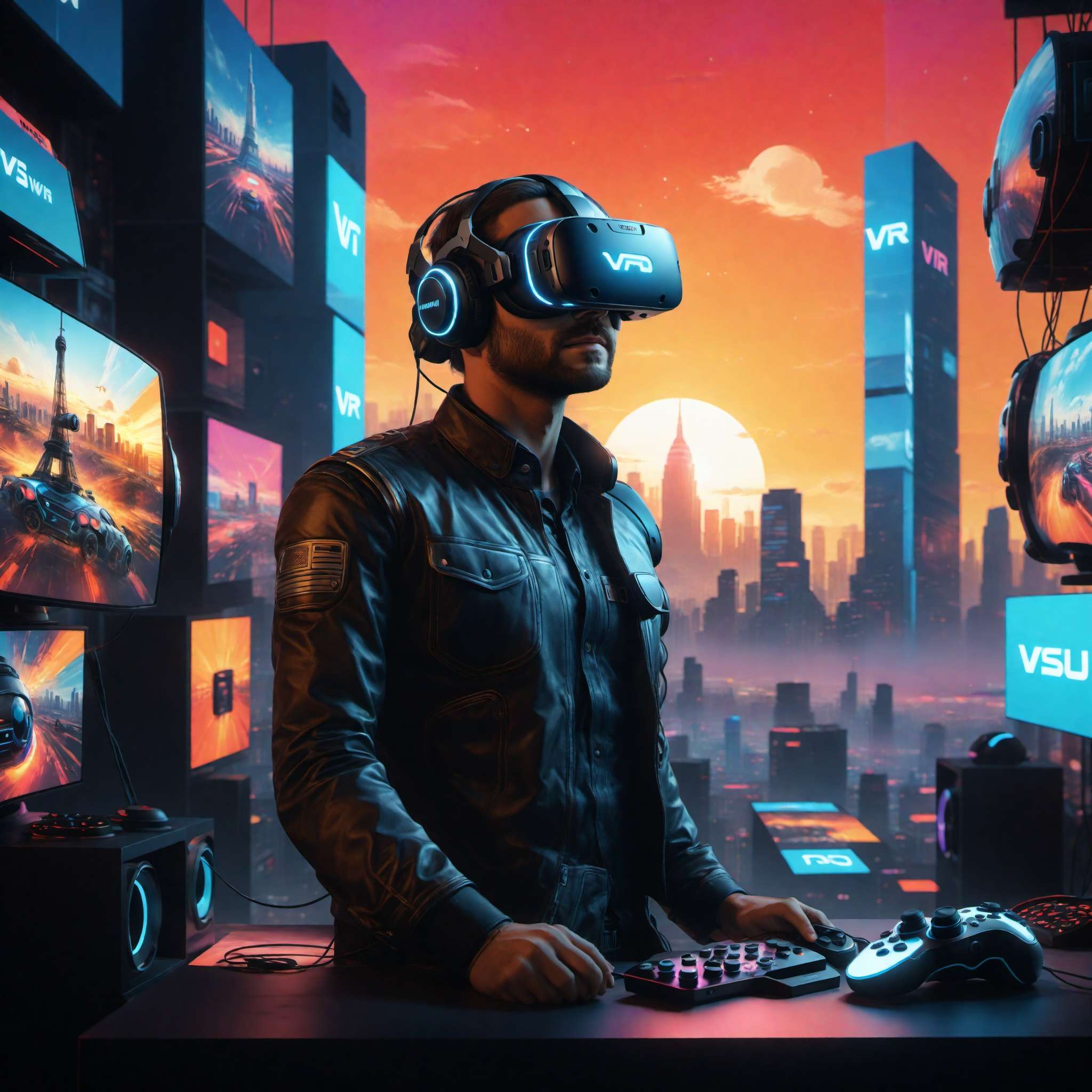
© Copyright , ZombieBunny.Org
Recap of VR gaming evolution
The evolution of VR gaming has been nothing short of remarkable. From the early days of rudimentary VR devices and simple games, we’ve seen the technology grow and mature into a platform that offers immersive, interactive experiences that were once the stuff of science fiction. Today, VR gaming is a thriving industry, with a diverse array of games and experiences that cater to a wide range of players.
The journey of VR gaming has been marked by significant milestones. The release of consumer-friendly VR headsets like the Oculus Rift and HTC Vive brought high-quality VR experiences into people’s homes. The development of standalone VR headsets like the Oculus Quest made VR gaming more accessible and convenient. And the growth of VR game libraries on platforms like SteamVR and the Oculus Store has provided players with a wealth of options to choose from.
But the evolution of VR gaming isn’t just about the technology and the games. It’s also about the growing community of VR gamers and developers who are constantly pushing the boundaries of what’s possible in VR. From sharing tips and experiences to creating new games and experiences, the VR gaming community is an integral part of the VR gaming evolution.
As we look to the future, the potential of VR gaming is unlimited. With advancements in VR technology, the integration of AI, and the expanding applications of VR beyond gaming, the VR gaming journey is far from over. It’s an exciting time to be a part of the VR gaming community, and we can’t wait to see where this journey takes us next.
The importance of VR in today’s world
The importance of VR in today’s world cannot be overstated. Beyond its role in transforming gaming, VR is increasingly being recognized for its potential to revolutionize various sectors and aspects of our lives. From education and training to healthcare and design, VR offers unique advantages that can enhance efficiency, effectiveness, and engagement.
In education, VR can provide immersive, experiential learning experiences that can enhance understanding and retention. In healthcare, VR can offer safe, controlled environments for training and treatment, potentially improving outcomes and patient experiences. In business and design, VR can streamline workflows and enhance collaboration, opening up new possibilities for innovation.
The impact of VR extends beyond these practical applications. On a broader level, VR is transforming the way we interact with digital technology. By offering immersive, interactive experiences, VR is moving us away from passive consumption to active participation. This shift has implications not just for gaming, but for our broader digital culture.
Moreover, VR is an important tool for creating empathy and understanding. By allowing us to step into different realities and perspectives, VR can deepen our understanding of different experiences and issues. This has potential applications in diverse areas, from social justice to environmental awareness.
In a world that is becoming increasingly digital and interconnected, the importance of VR is only set to grow. As we continue to explore and harness the potential of VR, it will undoubtedly play a crucial role in shaping our digital future.
Closing thoughts on transforming realities
The journey of VR gaming, from its early beginnings to its current state, is a testament to the transformative power of technology. As we’ve seen, VR is not just about gaming. It’s about creating immersive, interactive experiences that can transform our perception of reality, and that has far-reaching implications.
The evolution of VR gaming has shown us the potential of VR as a medium. It’s a platform that pushes the boundaries of immersion and interactivity, providing experiences that are engaging, memorable, and, in many ways, transformative. Whether it’s exploring fantastical game worlds, learning in immersive educational environments, or simulating real-world scenarios for training or therapy, VR offers a unique way of interacting with digital content.
But perhaps the most exciting aspect of VR is its future potential. With advancements in technology, the integration of AI, and the growing recognition of VR’s applications beyond gaming, the future of VR is full of possibilities. From more realistic and immersive VR games to wider applications of VR in education, healthcare, and other sectors, the potential of VR is vast.
In closing, the journey of VR gaming is a testament to the transformative power of technology. As we continue to explore this medium, it’s clear that VR is more than just a gaming platform. It’s a tool for transforming realities, and it’s a journey that’s only just beginning.
Please support our site and purchase something from our store.

